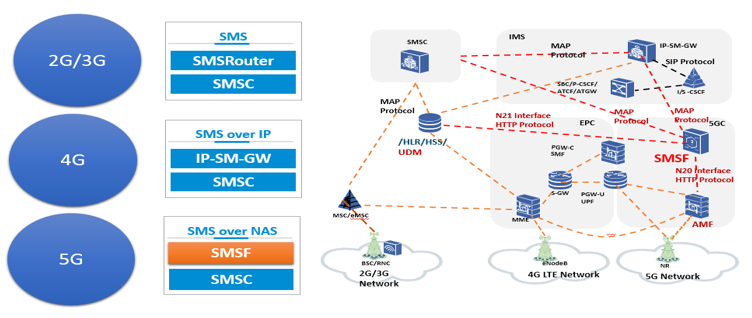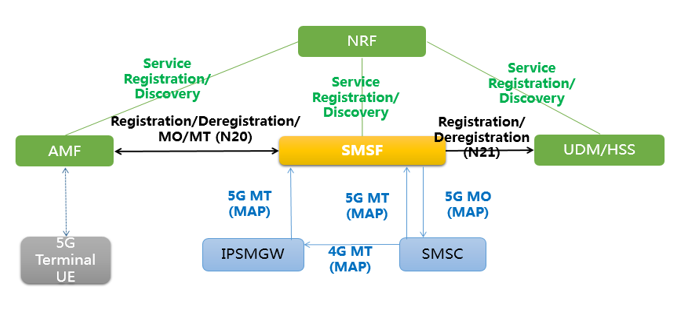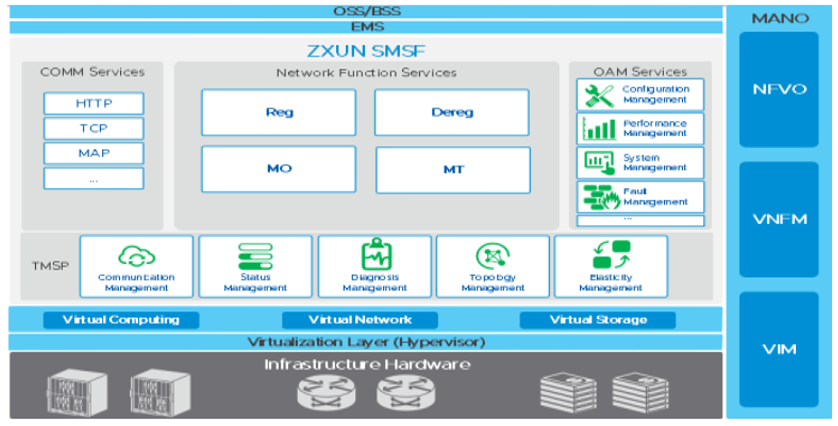Does traditional SMS “disappear”?
How many unread messages have you piled up in your SMS inbox in 2019?
According to the data from Ministry of Industry and Information Technology (MII), from January to October 2019, China’s mobile SMS service traffic increased by 40.8% year on year, and the revenue of mobile SMS service reached 32.5 billion Yuan by up 2.4% year on year. SMS continued the warmer trend of 2018.
When you see such statistics, a big question mark will appear in your mind: Who sends short messages now?
At present, fewer and fewer users communicate with each other through SMS messages, but more and more enterprises are becoming the users who send short messages. Therefore, the increment of SMS is not actively made by users for their active applications but for their passive applications. Think of these scenarios in our daily life: Use one APP to receive notification short messages including registration or login verification code SMS, password retrieval SMS, express retrieval SMS, and railway ticket success SMS. You can image that there are too many short messages around us.
But why are traditional short messages used instead of other methods?
From the perspective of enterprises, SMS verification codes are mainly used in application scenarios such as user registration, password retrieval, fast login, identity authentication, transaction confirmation, and important operation. This can reduce the risks of illegal registration and malicious registration, and ensure data security. Receiving traditional text messages does not require Internet access. Terminals support native access, high maturity, wide coverage, and accurate arrival rate with almost 100%. Users are not missed to be informed, causing unnecessary troubles.
From the perspective of consumers, the application of SMS verification codes can improve user experience and guarantee the security of accounts and assets. For most APPs, login with the SMS verification code is more secure, stable, and fast than other login modes.
How much does an APP provider invest in the SMS service? Cheng Wei, CEO of Didi Chuxing, said in public that Didi spent nearly 900 million Yuan on SMS in 2018.
How to develop traditional SMS messages in the 5G era?
2019 is the first year of commercial use of 5G, and the 5G era is about to be fully launched. As one of the basic communications functions, how can traditional short messages be transmitted? How are industry standards defined?

Figure 1 Evolution of Traditional SMS Services
SMSC that is shown in the above figure is an NE existing in the 2G era. It is mainly used to store and forward short messages. It interacts with peripheral NEs based on traditional MAP protocols, and has a large number of NEs in each carrier's existing networks. For the evolution of 4G network, the interaction between NEs is based on the SIP protocol. The IPSMGW NE is added to implement codec conversion between the SIP protocol and the MAP protocol, thus avoiding the cost and impact caused by upgrading the SMSC in the existing network. For the evolution of 5G network, interaction between NEs is based on the HTTP2 protocol. Similarly, 3GPP adds the SMSF NE in 5G core network to implement the codec conversion between the HTTP2 protocol and the MAP protocol. As can be seen, SMSF serves as the interface and bridge between 5G core network and the traditional SMSC for receiving and sending 5G NAS messages.
In addition, the power-on/off, location shifting, and 4G/5G switching of 5G terminal will trigger the registration/deregistration message flow, and access SMSF through AMF. SMSF records AMF where the terminal is located in the registration flow. When receiving the message from SMSC to the terminal, SMSF can correctly forward the message to the adjacent AMF where the terminal is located. In the registration flow, SMSF will register itself in UDM, inform the UDM of the terminal's presence, and obtain and subscribe to the signing information of the terminal from the UDM, so that SMSF can authenticate the terminal when the terminal receives or sends NAS messages later.

Figure 2 SMSF and Its Peripheral NEs
In 5G core network, SMSF (Short Message Service Function) is a 5G short message service NE that complies with the 3GPP 29.540 standard protocol. It interacts with AMF (Access and Mobility Management Function) NEs in 5G core network through the N20 interface, and with UDM (Unified Data Management) through the N21 interface. The MAP interface protocol interconnects with SMSC (Short Message Service Center)/IPS MGW to provide NAS SM registration, deregistration, receiving and sending services for 5G terminal users.
The SMSF-based 5G SMSoverNAS message solution is defined in the 3GPP standard protocol. Compared with the 4G IMS message solution, 5G SMSoverNAS has its advantages and special application scenarios:
- 5G data cards/MTCs/IoT terminals only need SMS instead of voice
- IoT terminals have the requirement for low power consumption.
- VoNR does not support 4G-based IMS
ZTE ZXUN-SMSF

Figure 3 ZTE ZXUN-SMSF
ZTE provides SMSF products in the 5G core network. These SMSF products comply with 3GPP R16 specification and compliance evolution, support registration and discovery of the NRF service, interaction between SBI and AMF and UDM, and interconnection between protocol interfaces such as traditional MAP and SMC/IPSMGW to provide the NAS message service for 5G user terminals. In addition, SMSF has the following enhanced capabilities to provide operators with faster, better, stronger, and more stable service capabilities:
Supporting NFV standard architecture:
- Supports layer-3 decoupling of NFV from hardware, virtual layer and upper layer applications.
- Supports blueprint orchestration, quick packaging and automatic deployment.
- Supports lossless upgrade, lossless elasticity and self-healing.
Security:
- The SBI service-based interface supports TLS-based Https transmission encryption.
- NRF service registration and discovery supports security authorization and authentication of OAuth2.0.
- The SMSF product supports static security authorization and authentication of accessed NFs.
Reliability:
- The internal service processing interfaces, external interfaces and data cache units all support N+M redundancy backup.
- Internal O&M units support active/standby redundancy.
- SMSF supports site-level NE disaster tolerance, and provides independent innovation standard patents that have been recognized and adopted by China Mobile.
- SMSF supports active/standby AMF, mutual backup and group pool disaster tolerance.
- SMSC supports NRF active/standby and mutual backup disaster tolerance.
- SMSC supports registration, deregistration and MO signaling prevention storms on the AMF side.
- SMSC supports MT signaling prevention storms on the SMSC/IPSMGW side.
Linear scaling and big capacity:
- The bearer message service processing units, external interfaces, and data buffer units all support N+M load sharing.
- With the development of services, the internal service processing units support linear and dynamic scaling at any time.
- SMSC supports national large-capacity offices.
Unified O&M:
- Provides unified NM EMS of 5G core NEs such as ZTE AMF, UDM, and NRF.
- Provides unified O&M interfaces such as role rights, operation log, fault alarm, performance statistics, and failure observation.
- Support full-flow signaling tracing at the core network side for the terminal to receive and send NAS messages and registration/deregistration messages.
- Supports IPv4/v6 dual-stack interconnection with peripheral NEs.
- Supports fault alarm association analysis.
With the upgrade of 5G network and terminals, the revolutionary upgrade of traditional short messages will be realized. In addition to the SMSF product that supports 5G short messages, ZTE message products also provide complete 5G message solutions, including 5G rich media message, rich media business message and IoT message, to construct big connections of messages between "man-network", "thing-network" and industry applications, and meet the all-round information communication requirements in the 5G era, thus helping operators rebuild their ecological value chains.
ZTE supports AI with full-stack IT offering
5GC Green Engine Solution to Enable Green Internet of Everything in the Dual-Carbon Era
5GC Private Network 2.0 Empowerment and Efficiency Improvement Boosts High-Quality Development of the Industry
5G Empowers Intelligent Mining for High-quality Development of Shaanxi Coal Caojiatan Mining
ZTE and China Mobile embrace digitalization for biodiversity conservation in Panda Reserve
Three Aspects Contribute to ZTE’s Remarkable Breakthroughs in Advanced G4X Server
How 5G Private Networks Are Poised to Transform Enterprises Worldwide: All Scenario Private 5G Helps Operators to Realize Private 5G as a Service
ZTE’s commitment to servers generates robust growth of up to 60 times in past 8 years
ZTE eyes top 5 global server market share
Full-Scenario One-Stop 5G Private Network for Vertical Industries

